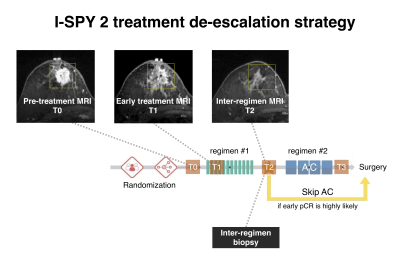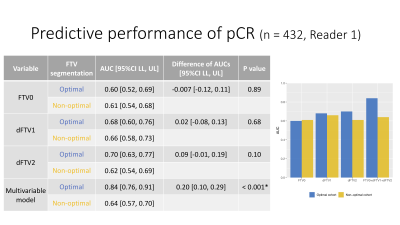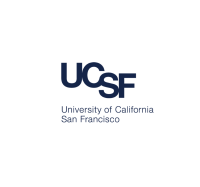Natsuko Onishi1, Jessica Gibbs1, Teffany Joy Bareng1, Wen Li1, Elissa R. Price1, Bonnie N. Joe1, Laura J. Esserman2, The I-SPY 2 Consortium3, David C. Newitt1, and Nola M. Hylton1
1Department of Radiology & Biomedical Imaging, University of California, San Francisco, San Francisco, CA, United States, 2Department of Surgery, University of California, San Francisco, San Francisco, CA, United States, 3Quantum Leap Healthcare Collaborative, San Francisco, CA, United States
1Department of Radiology & Biomedical Imaging, University of California, San Francisco, San Francisco, CA, United States, 2Department of Surgery, University of California, San Francisco, San Francisco, CA, United States, 3Quantum Leap Healthcare Collaborative, San Francisco, CA, United States
Segmentation quality of functional tumor volume (FTV), measured prospectively from breast DCE-MRI performed sequentially during neoadjuvant chemotherapy, may impact the predictive performance of FTV for pathological complete response.

Figure 1: I-SPY 2 treatment de-escalation strategy
The treatment de-escalation decision will be made at T2 based on combined MRI and biopsy results. Qualified subjects will be given the option to skip anthracycline-cyclophosphamide (AC) treatment and proceed directly to surgery.

Figure 3: Predictive performance of pCR in the optimal and non-optimal segmentation groups (Main analysis: Reader 1)
AUC values for the prediction of pCR were higher for the optimal segmentation group versus non-optimal group for ∆FTV1, ∆FTV2 and the multivariable model (0.68 vs. 0.66, 0.70 vs. 0.62, and 0.84 vs. 0.64, respectively), with the difference reaching statistical significance for the multivariable model.
